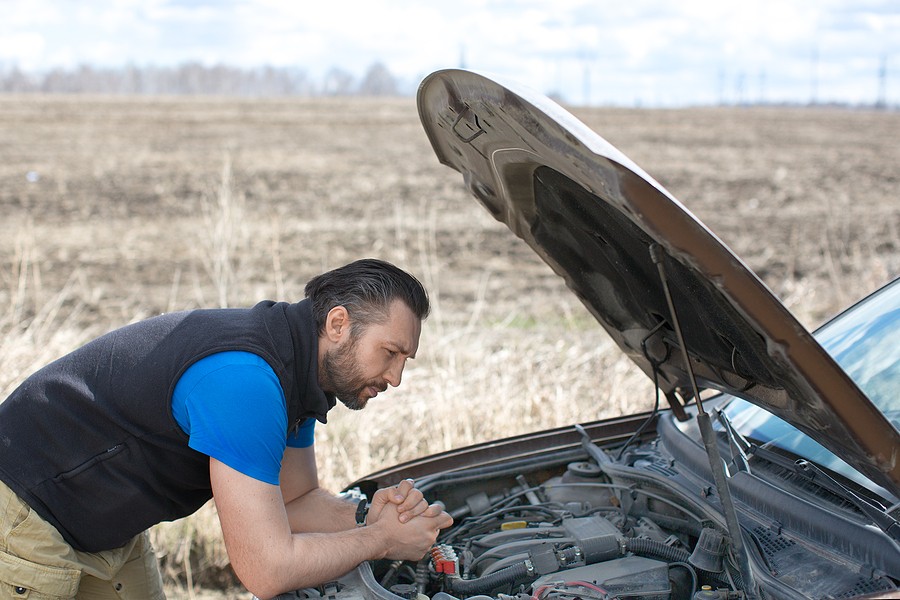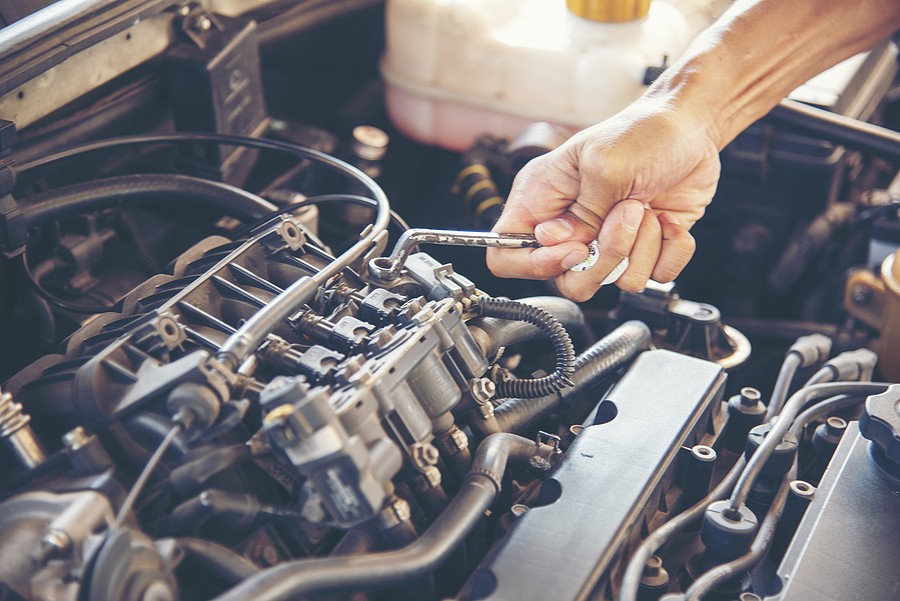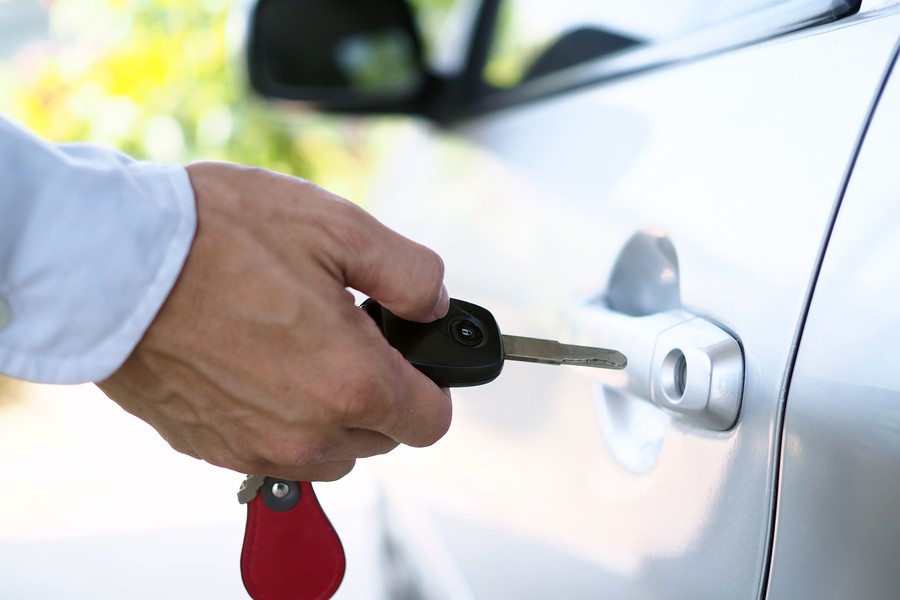Bad crankshaft bearings are a common problem that can cause significant engine damage. This article will help you diagnose and remedy the issue before it becomes too big of a problem. It covers topics such as knowing if you have a bad crankshaft bearing, what causes bad crankshaft bearings, and how to fix them. Read on for the 10 common symptoms of a bad crankshaft bearing!

What is a crankshaft bearing, and what does it do?
A crankshaft bearing, also known as the main Bearing, is an engine component that helps support the engine's weight and its internal components. It works by using a set of bearings and a crankcase (also known as a block) to help reduce friction between moving parts.
The bearings are typically made of steel and work with the crankcase to reduce the friction of metal parts as they move against each other. The bearings are typically located at either end of the crankshaft and help support some or all of the weight of the pistons, connecting rods, and flywheel.
10 Signs that you may have a bad crankshaft bearing
The following are 10 signs that you may have a bad crankshaft bearing. If you experience any of these symptoms, then it is likely that you will need to replace the bearings or take measures to repair them.
1) Loud clicking noise while the engine is running
Several engine problems could cause a loud clicking noise coming from the engine. However, one common cause for this noise is bad crankshaft bearings. If you hear loud clicking that changes or increaseth, it could be caused by a failing bearing that is starting to go out.
2) Rough idle
Bad crankshaft bearings may also cause a rough idle. Bad bearings can cause the engine to rock while it is running, resulting in a rough idle or shaking.
3) Engine overheating
Bad crankshaft bearings may also cause an overheated engine. If the bearings are worn, this could cause them not to spin as easily. This would create excess friction that would heat the bearings and cause them to overheat.
4) Engine quits suddenly
Another sign that you may have bad crankshaft bearings is if your engine suddenly quits while driving it. One common reason for this symptom is a failing bearing. For example, a damaged bearing could seize up, which would prevent the crankshaft from spinning as it is designed to.
5) Engine knocks or rattles while idling
A knocking noise from the engine could indicate a bad bearing as well. A clicking noise that changes pitch, especially if combined with an overheating engine, can mean that one or more bearings have failed and are seizing up. You may also notice a rattling noise that increases when you add gas to the engine. Again, this is likely a bad bearing that has failed and becomes loose.
6) Engine runs roughly or unevenly
A running engine that doesn't run smoothly could have bad crankshaft bearings. The friction of the failing bearings can make it difficult for the pistons to turn. This would cause the engine to run roughly, with pistons firing at different times than others.
7) Engine is hard to start
Bad crankshaft bearings may also cause a hard-to-start engine. If you have difficulty getting your engine started, it could mean that the bearings are sticking or moving slowly due to friction. This would result in improper timing between the cylinders and make your car difficult to start up.

8) Excessive blue smoke from the tailpipe
Excessive blue smoke coming out of the exhaust pipe may also indicate bad crankshaft bearings. An oil leak typically causes blue smoke, but if there are no other symptoms (such as oil on the engine), it may be caused by bad bearings.
9) Engine seems sluggish or is hesitant to respond
Bad crankshaft bearings can also cause a sluggish, difficult-to-start, or non-responsive engine. The added friction from the failing bearings would make starting your car a struggle and take longer to speed up.
10) Oil level in the crankcase is low
An oil leak could indicate that you have bad crankshaft bearings, but so could a low oil level in the crankcase. If one or more of your engine's bearings are going out, then it will likely take some of the lubrication with it as well. This would cause you to add oil to your engine more often.
How to replace a crankshaft bearing yourself?
If you're planning to save on labor cost, follow these steps to replace a crankshaft bearing yourself:
- Jack up the car and secure safely on jack stands or ramps
- Drain the engine oil into a container to put it back in the engine.
- Remove the oil filter and pick up any loose pieces of the old filter.
- Unbolt starter. If your starter's wires go through part of the engine, be sure to mark them before they come off so that you know where they were originally connected. A little electrical tape can help with this.
- Remove serpentine belt and timing cover (if necessary)
- Use a harmonic balancer puller or press to remove the crankshaft pulley.
- After removing the crankshaft pulley, use a pry bar or screwdriver covered in a clean cloth to remove the woodruff key from the crank snout.
- Use an air chisel to tap counterclockwise on one of the crank snout bolt heads until the crankshaft turns.
- Apply penetrating spray where you are tapping on the crankshaft and allow it to soak in for 30 minutes
- Remove all of the bolts that hold your flywheel/flexplate on. The easiest way is with an air impact wrench. Other ways would be with a large breaker bar or a harmonic balancer puller, which can also be used to remove the flywheel. There will likely be three 20mm-ish pins holding it on with this tool: one at 12:00 and two at 4:30 and 8:30 (or 6:30).
- Remove your flywheel/flexplate. It should come off very easily if there are no bearings between the crankshaft and the engine block.
- Inspect the Bearing and confirm it needs replacement
- Clean oil off of the crankshaft and around where the bearings go. You can use brake cleaner or carburetor cleaner for this.
- Clean flywheel/flexplate that your new parts will be pressed onto. Brake cleaner works well here too.
- Apply evenly-spaced drops of oil in the hole where the Bearing goes around the crankshaft. Some people say you should use assembly lube, Loctite 518, or graphite when pressing on these parts, but I didn't, and everything went smoothly. You do want a little bit of oil, though, so it doesn't get metal-to-metal contact and gall while you press it on.
- Double-check your bearing size against your old flexplate/flywheel and your new flexplate/flywheel to make sure they match up perfectly. Some people say that a press will automatically center the part, but you should double-check anyway.
- Place bearing on the crankshaft with the larger side of bearing facing down (you'll see why later) and place flexplate/flywheel on top of it. Make sure it's all centered, then start threading bolts by hand at first to keep everything in place.
- Line up one bolt hole with a pilot hole in the engine block, then use an air impact wrench or breaker bar to tighten the bolts down evenly. This is one instance where I would recommend an electric impact wrench vs. a pneumatic one because it's much easier to control the torque, and you get a tighter seal. If you don't have an impact wrench, try using a torque wrench set to 60 ft/lbs for 1/4″ bolts and 85 ft/lbs for 5/16″ bolts (flywheel) and all of your bolts down evenly until they're tight. Some people say to use Loctite on these bolts so there would be no chance of them coming loose, but I didn't, and everything is still fine.
- Use a pry bar or flat head screwdriver covered in clean cloth (so as not to ruin any parts) to remove the woodruff key from the crankshaft snout if necessary.
- Put a new crankshaft oil seal in like you took the old one out.
- Put new snout bearing on with smaller side of bearing facing down (you'll know why later). Make sure it's snug before tightening everything down, but not too tight, or you could mess up your crank.
- Put crankshaft sprocket back on with longer end pointing towards flywheel/flexplate, then place woodruff key back into a notch in the “snout” of the crankshaft.
- Use a torque wrench to tighten the snout bolt to 25 ft/lbs, then remove the woodruff key with pl. The key should come right off with little or no effort. If it's hard to remove, you may have tightened the snout bolt too much earlier and warped your crankshaft
- After removing the key, replace starting motor, spark plug wires, etc., if necessary.
- Reinstall valve cover(s) after cleaning thoroughly (brake cleaner or carburetor cleaner), then reattach hoses/wires that you removed earlier
- Pour new oil into the engine until it comes out of the small hole in the middle of the oil strainer/filter housing (the one on top). Clean off any remaining dirt around this area before installing a new gasket and filter. Ensure to over-tighten the filter when reinstalling to avoid cracking or damaging it.
- Reattach dipstick and filler tube after cleaning thoroughly (carburetor cleaner works well for this), then pour in approximately 4.5 quarts of oil. Fill slowly, so you don't disturb the oil pan gasket or mess up your new filter, making sure not to overfill your engine.
- Start the car and check underneath for leaks. If you find any, tighten bolts/hoses until they're secure enough to stop the leak.

Tips for preventing crankshaft bearing failure:
Since it's not a very simple job to deal with crankshaft bearing failures, here is a list of experts' tips and tricks to prevent premature crankshaft bearing failures:
- Use synthetic oil (5W30, 10W30, and the like) and change your oil every 3-4k miles or more if you drive in dusty/dirty conditions.
- Make sure to torque down all of your bolts evenly to avoid warping your crankshaft. Never crank on the snout bolt when removing/installing it.
- If you own an electric impact wrench, use that to remove the snout bolt instead of a breaker bar or air impact wrench (if possible) when installing your new crankshaft bearing.
- Don't ever use Loctite when retorquing bolts on your oil pan, starter, valve cover, or crankshaft snout.
- Symptoms of a bad crankshaft bearing are not too difficult to spot. If you've had your oil changed recently, take the old oil down to the local auto parts store and ask them to check it for metal shavings (or sparks if it's wet), which is usually an indication of a failed bearing. Your engine will usually make a loud tapping noise, and you'll notice it more when accelerating or under load. If your oil is dark and smells burnt, that's another good indication that there's something wrong with the bearings in your crank.
- If you check your oil and notice metal shavings or it has an off-color or smell, DON'T DRIVE YOUR CAR.
- A bad crank bearing can cause catastrophic damage to your engine if neglected for too long. So have it checked out as soon as possible.
Symptoms of a Bad Crankshaft Bearing FAQs
This section covers the main frequently asked questions about the crankshaft bearing.
What does bad crank bearing sound like?
A bad crank bearing will cause a loud tapping noise when accelerating under load, more so at higher RPMs. This sound is usually accompanied by black smoke coming out of your exhaust, and the oil dipstick will be checked constantly for signs of metal shavings or it having an off-color or smell. If you notice either one of these things, you should take your car to a certified mechanic as soon as possible.
Can you drive with a bad crankshaft bearing?
You shouldn't drive your car if you notice any of the symptoms listed above, as it could cause catastrophic damage to your engine. If only one side is bad, you can drive your car to a mechanic, but it will be pretty obvious something's up when the noise only happens at certain RPMs.
Will a bad crankshaft bearing affect my car's performance?
Yes, but it might not be to the extent you're thinking. A bad crank bearing will usually cause the car to run poorly, and it won't be as fast as usual. Also, if both sides of your crankshaft bearing are bad, then you will notice issues with your car's power.
Can you replace the main bearings without removing the crank?
No, the crankshaft needs to be removed to replace the main bearings.
What causes the crankshaft bearing to fail?
Several factors could cause the crankshaft bearing to go bad. If you see shavings in your oil or it has an off-color or smells burnt, one of your bearings is most likely bad and needs to be replaced. Driving with a damaged crank bearing will cause further damage to your engine, so you should have it checked as soon as possible if that's the case.
- Bad oil makes for a bad crankshaft bearing
.If you're using bad oil, this could also cause your Bearing to go bad. You should always check the oil you put in your car regularly and change it when necessary. Always use synthetic oil if possible (5W30 or 10W30).
- Bad transmission can cause bearings to fail.
If you're driving with a bad transmission, the engine absorbs much of the shock from the misfiring transmission. This could cause your crankshaft bearings to go bad faster than normal, so if you have a hard time taking off, it might be a good idea to have your tranny looked at.

Conclusion
In this article, we have outlined the symptoms of a bad crankshaft bearing and how to go about fixing it yourself. We also suggest some preventative measures that can be taken to avoid having to replace the crankshaft bearings altogether. Finally, if you cannot fix the problem yourself, we recommend taking your car to a mechanic for further inspection.




